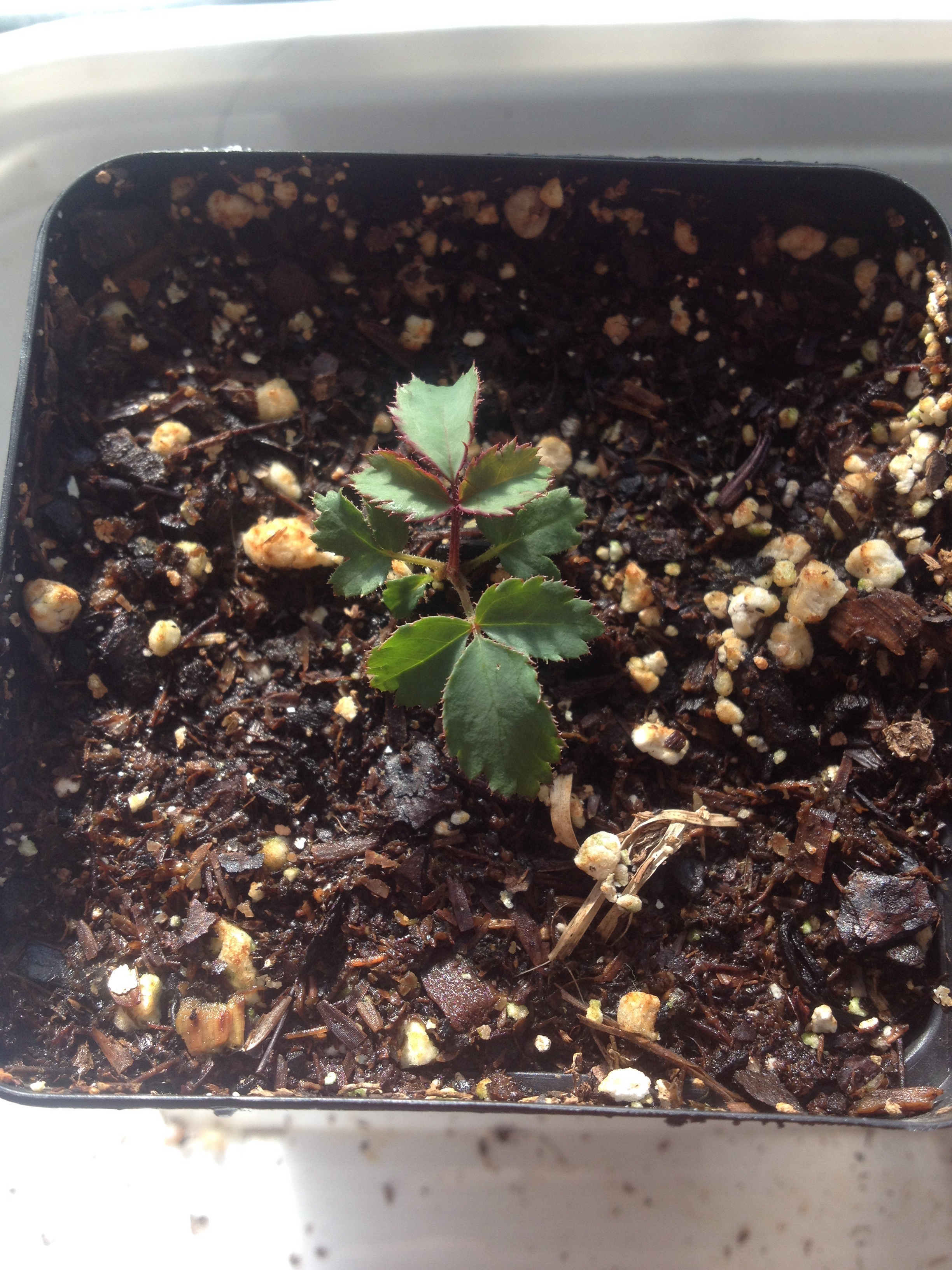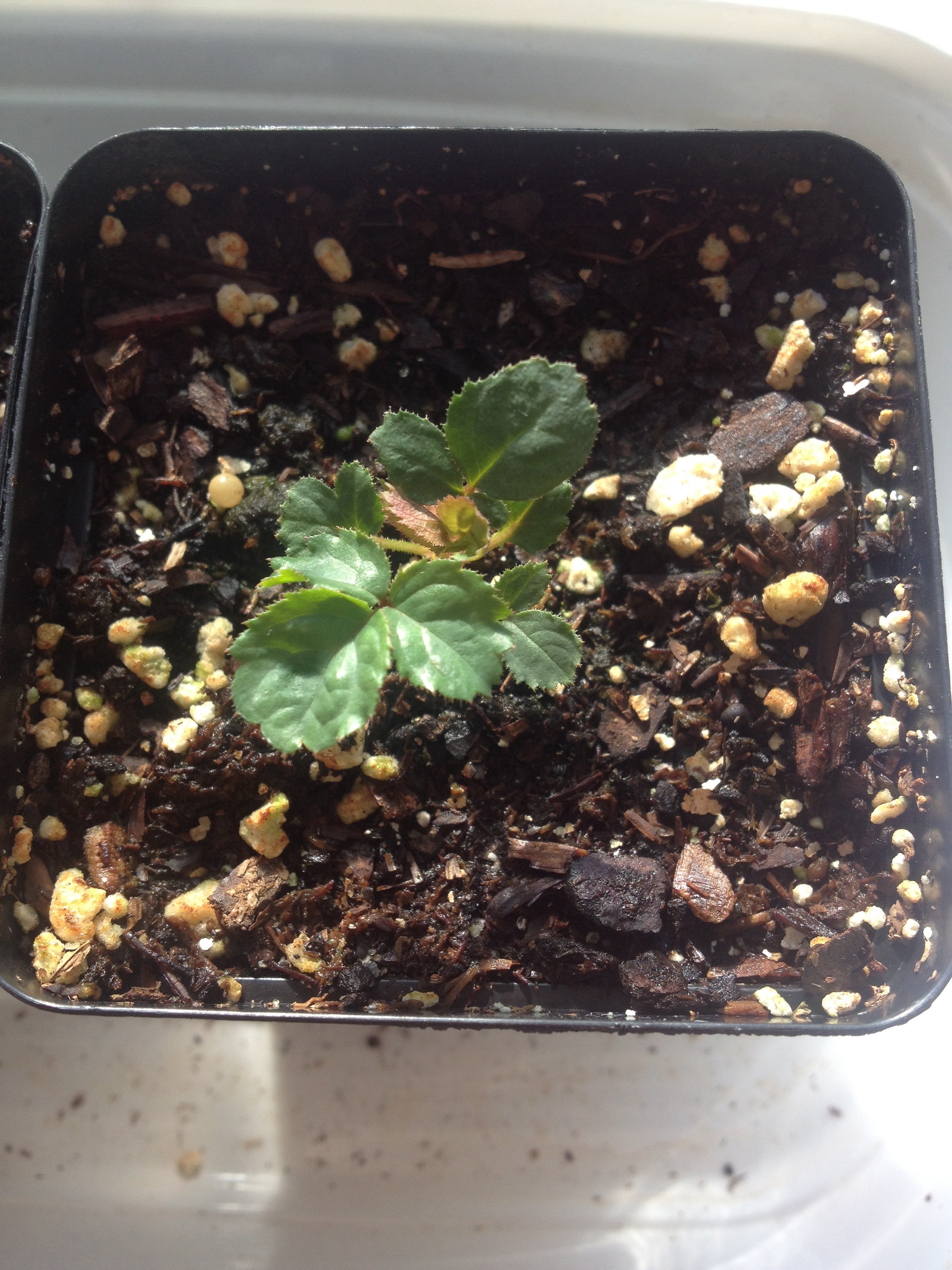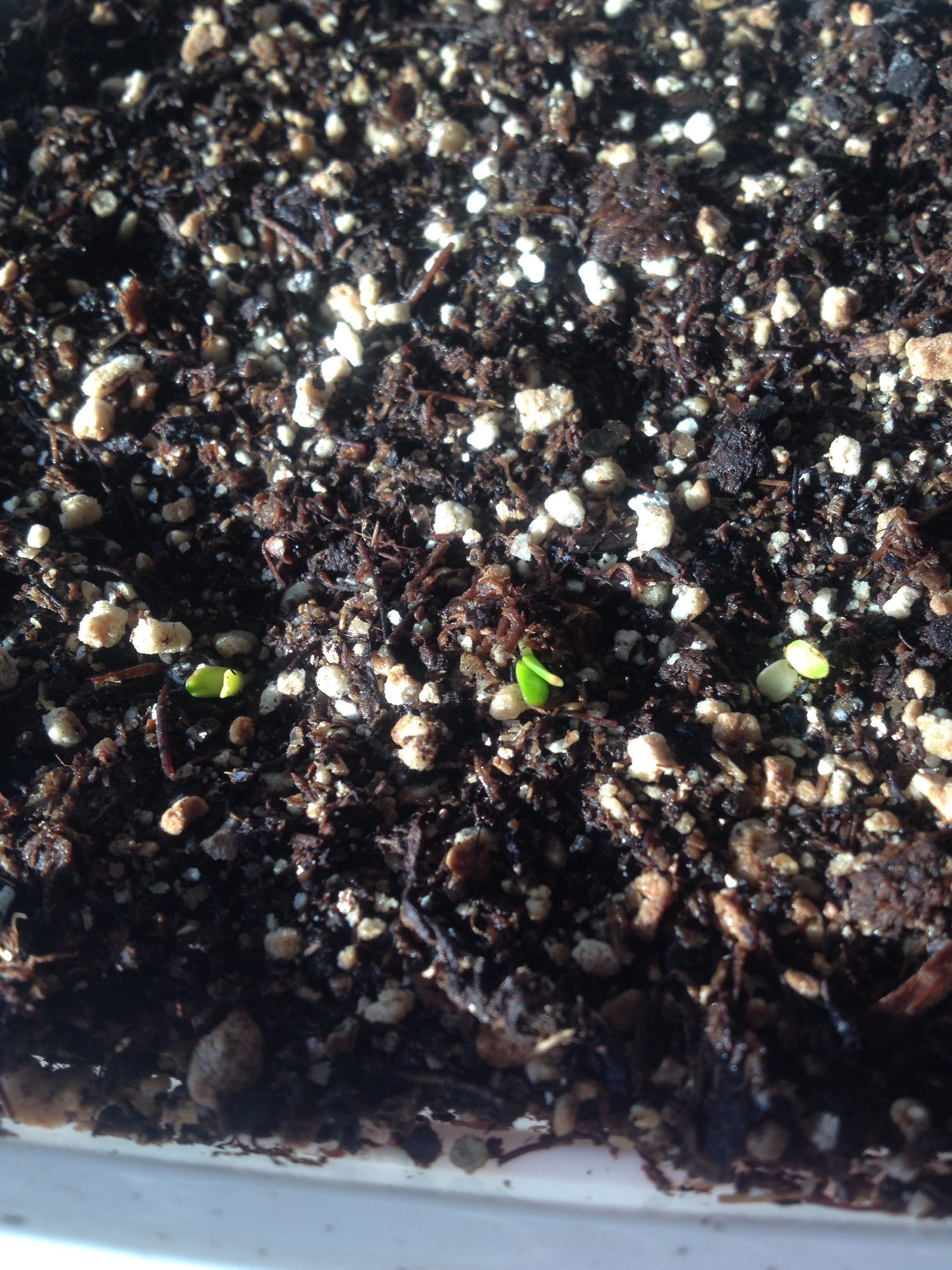So over the past couple of years I’ve figured out and perfected my own improved protocols for embryo extraction of roses. I now have adult plants which I use in crosses that came from my first attempts at extraction, but these new babies right here are exciting and interesting to me, so I figured I would share my success. The few I’m about to show you spent ZERO days in stratification. R. omeiensis seeds kindly given to me by Melissa, my own cross of Sharifa Asma x Basye’s Amphidiploid 90-78, and a [Secret x a chromosome doubled(R. wichuriana x R. banksiae)] OP, which couldn’t have been done without the kind help of Natalie and Dr. Byrne. Hoping to recover repeat bloom on the last one, and develop my own tetraploid Banksia breeder.
-Andrew



Enzyme extraction sounds tempting. Would you call it difficult? How long did the embryii (?) take to sprout?
Very cool! I wonder why R. omeiensis hasn’t been used more?
Congratulations Andrew! Very cool, indeed. Omeiensis has been played with. Ralph Moore had it in the ‘stable’, but raised few things from it. None were very healthy and all were huge, once flowering plants. There was actually little he didn’t mess with at one time or another. He didn’t pursue this line due to his initial results and, “how many balls can you juggle at one time?” Those seedling houses contained some pretty strange and wonderful things!
SalixGoclon, yes it should be very tempting because you can speed up a hybridizing program by months or even years! Everything has a price though and this is that it is very time consuming, and you will loose perfectly good seeds from disease or mechanical damage that would’ve otherwise sprouted just fine with stratification and patience. Unfortunately I’m not that patient, plus I’ve experienced that even after proper stratification and storage, some seeds will have rotted by then or the achene lignin is just too thick for the embryo to push open. Just a hypothesis. So is it difficult? No, but it will take a while for your hand muscles to “develop” the proper precision required to get the embryo out.
These embryos began germinating in 2-3 days which seems to be the average. By the way a bright white embryo is what you want to see, but if the radicle breaks off, all hope is lost!
Kim, thank you so much, I am excited! I remember Paul Barden saying that this species was difficult to work with as well. That’s understandable with these diploid oddball species. After much persistence at school just yesterday I’ve finally been approved to begin experimental chromosome doubling of Rosa and Ipomea using Colchecine in the plant tissue culture lab. I might wait to try doubling a bud of omeiensis instead of the first true leaves as they emerge. I only have 3 seedlings that were hard to come by and I don’t want to risk it, you know what I mean? But eventually I’ll have some bright and shiny new Amphidiploids to work with and hopefully share with everyone. A (4x) Omeiensis is definitely in the works and I plan on doubling the diploid (R. foliolosa x HH) seedling I have from Jackie since it’s the most sterile seedling I’ve ever seen. I’ll probably try to make a (4x) Xanthina as well. Natalie gave me some material of a (4x) Bracteata in the spring and that thing is a monster!!!
I’ve always wondered what it would’ve been like to meet and learn from greats like Ralph and Dr. Basye. I can’t even imagine how cool it must have been to see all of Ralph’s work and Sequoia in person?!
2-3 days?! Forget stratification! If a rose blooms within 6 weeks, and if it is hardy enough to produce at least one seed,and if it takes 100 days for a hip to ripen, then a generation can be conducted in about 110 days, or 3 generations a year! I extracted zinnia embryos- I got germination within 24-48 hours, or less. I have a few seeds lying about… heheheh
What equipment do you use?
You’re welcome, Andrew! I never had the pleasure of meeting Dr. Basye but did have the opportunity to briefly chat with a gentleman years ago through Garden Web who visited his garden. David Neumyer (I hope I’ve spelled his name correctly, it’s been a long time!) enjoyed an afternoon of being shown all the goodies Dr. Basye played with for many years. He is the gentleman Dr. Basye handed a plant, identifying it as 65-626, Commander Gillette, saying it was the rose he felt had the most to offer in battling prickles and black spot. David had moved it several times and was facing another move. He feared he might lose it so he sent cuttings of it to Sequoia at my urging. They propagated it. This Commander Gillette is exactly the same rose as what had been shared with Mr. Moore by an unremembered benefactor years earlier as “Basye’s Thornless”. Both of them are also identical to the rose Dr. Basye sent to The Huntington Library he personally identified as 77-361, the rose Paul Zimmerman and I christened “Basye’s Legacy” to differentiate it from the previously propagated roses in case some future difference was ever determined. This is one of the questions I suggested to Dr. Malcolm Manners at Florida Southern College for his students to use as their summer projects in DNA testing. Hopefully, it might eventually get done.
Yes, visits to Sequoia were always filled with SO much information, excitement and discovery. I would vibrate the three hour drive home (usually after midnight as he NEVER wanted to go in to bed) from all I’d seen and heard. I began this response and figured when it hit several pages, perhaps I should finish it and submit to our Esteemed Editor to see if she liked it. I’m too far long now not to! Kim
Andrew,
You are going to have to define what you mean by ‘most sterile’ R.foliolosa x H.Hudson. Like in germfree? meaning disease free, hopefully? Most of mine, even with the fine frilly leaves are totally spot free. But I did discard at least one that had spots. I did get some hips, hopefully successfully crossed, from at least one of that cross. So hopefully it is not that kind of sterile.
Those of my foliolosa x HH that bloomed were able to make seed. They didn’t all bloom this year. Some are clean, and at least one is not healthy.
Salix, I use diamond tipped tweezers, pipettes, a microfile, small clippers to crack open the achenes and a scalpel.
Kim, that is wonderful! Am I to understand that Commander Gillette and Basye’s Legacy are the same rose?
Jackie and Joe, I am talking about genetically sterile unfortunately. The one of mine that I posted about recently has continued blooming and I’ve tried using my most fertile tetraploid, triploid, and diploid pollen parents on it to no avail. Also I’ve repeated harvested anthers and even examined them under a microscope and concluded that this particular seedling does not produce pollen. I’ve never seen that before in a rose so that’s what I mean by most sterile. This may be a blessing in disguise however, because remember Dr. Basye’s observation that the more sterile a wide diploid cross was, the more fertile it became once it was converted to and amphidiploid (tetraploid). Thinking about digging up the whole plant and bringing it to the lab so copious amounts of colchicine can be applied in the absence of environmental conditions. My other R. foliolosa x HH seedling has yet to bloom though, so who knows it may be a fertile seedling like everybody else’s?
-Andrew
Andrew, all the roses I’ve encountered from every source identified as those three names have been identical. Which one they are, only a DNA test could even begin to explain. Dr. Basye, himself, identified the same rose as two different names. He handed it to David Neumeyer and stated it was Commander Gillette. He then sent it a few years later to The Huntington Library who grew it in The Study Plot, where old, found and huge roses were grown. There, it was labled, “Basye’s Thornless” and grown beside “Basye’s Probable Amphidiploid”. Dr. Basye sent it with the information it was 77-361. You can see the scan of the accession card from The Huntington’s plant card file here. http://www.helpmefind.com/rose/l.php?l=21.215354 Dr. Basye wrote of his sending the two roses to The Huntington for his 1985 ARS annual article about A Thornless Rose Descended from R. Carolina, stating bud wood would be available to interested breeders for a small donation. It was from reading that article, I began searching for them as that was during the years I volunteered there, propagating roses. Twenty years later, no one had ever inquired about them. The Study Plot was demolished to make room for the Chinese Exhibit which now stands where the pond across the road from where it grew was.
Andrew…Have you considered using the safer, but effective chemicals trifluralin and oryzalin?
There is a paper somewhere describing the successful in vitro doubling using I think oryzalin, and our own David Zlesak has used trifluralin applied between cotyledons successfully.
I think these chemicals are less dangerous and maybe more effective (specific in their action) than colchicine.


